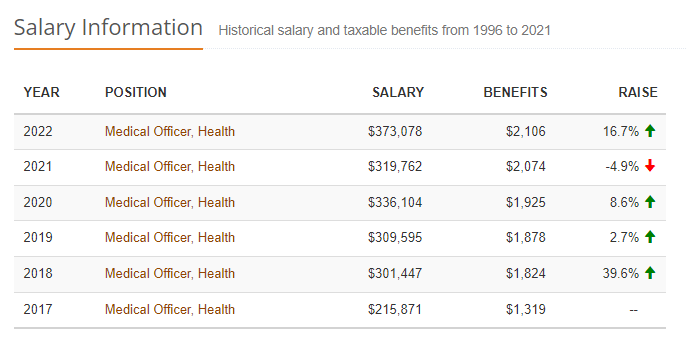Introduction
The Ontario Sunshine List, introduced in 1996, is an annual disclosure of public sector employees earning over $100,000 in Ontario. While its original purpose was to promote transparency and accountability, it has become increasingly clear that the Sunshine List needs to be updated.
We’ll explore why the Ontario Sunshine List has outlived its usefulness and consider alternatives to achieve its original goals better.

1. Inflation and the $100,000 Threshold
When the Sunshine List was introduced, a $100,000 salary was a significant indicator of a high-income earner. However, over the past two decades, inflation has eroded the purchasing power of the Canadian dollar, making the $100,000 benchmark less relevant. In 1996, $100,000 was equivalent to approximately $160,000 in 2023 dollars. The static threshold no longer accurately represents high-income earners in the public sector, resulting in an ever-growing list that has lost much of its original impact. In 2023, 267,000 public servants were on the Sunshine List. Four thousand seven hundred fifty-six public sector employees made the first Sunshine List in 1996.
2. The Growing List and Loss of Context
With the list growing yearly, it has become increasingly difficult for the public to discern which positions warrant scrutiny. The sheer volume of names on the list dilutes the intended focus on high-income earners, and the lack of context about each position’s roles and responsibilities makes it even more challenging for the public to understand the value these employees provide.
3. Privacy Concerns
The Sunshine List has also raises privacy concerns, as it publicly discloses the names and salaries of individuals who may not necessarily hold senior management positions. Why should everyone know what Jim, the kindly data analyst, earns annually? Shouldn’t we only focus on the executives of poor-performing agencies in Ontario earning high six figures salaries?

4. Stigmatizing Public Servants
The Sunshine List inadvertently stigmatizes public sector employees by subjecting them to public scrutiny without context or explanation. This may lead to misconceptions about the public sector workforce, with an undue focus on salaries rather than the value these employees provide to society. Public servants who genuinely serve the community may feel unfairly targeted, leading to decreased morale and potentially negatively impacting recruitment and retention.
5. Comparing Apples to Oranges
The Sunshine List often leads to unfair comparisons between positions in the public sector and those in the private sector without accounting for differences in job responsibilities, work environments, and benefits packages. This can create a distorted perception of public sector compensation, sometimes leading to ill-informed debates about salary fairness.
6. Alternatives to the Sunshine List
Given the outdated nature of the Sunshine List, it’s time to consider alternatives that better serve the goals of transparency and accountability. Some possible options include the following:
- Adjusting the Threshold: Regularly updating the $100,000 threshold for inflation would ensure that the list remains focused on high-income earners, making it more relevant and meaningful. I would change it to $200,000 and adjust it every decade.
- Providing Context: Including additional information about the roles and responsibilities of those on the list would give the public a better understanding of the value these employees provide, although this would add costs to the process.
- Salary Bands: Replacing individual salary figures with salary bands would maintain transparency while addressing privacy concerns and reducing the stigma associated with the Sunshine List. Big successful companies do this, and aren’t we trying to mimic what works in the private sector to the public sector?
- Comprehensive Compensation Reports: Replacing the Sunshine List with a more comprehensive report on public sector compensation, including comparisons to the private sector, would provide the public with a clearer understanding of the overall compensation landscape and foster more informed discussions on salary fairness.
- Focusing on Top Earners: Limiting the list to only the top 25 earners within each organization or a specified percentage of employees would reduce the list’s size and focus attention on those truly earning exceptional salaries.
- Performance Metrics: Incorporating performance metrics alongside salary data would help demonstrate the value public sector employees deliver for their compensation, giving the public a more comprehensive understanding of how their tax dollars are spent. Wouldn’t it be great if we saw if the senior managers on the sunshine list “met most”, “met all”, or “exceeded” their yearly expectations like employees at big companies are rated?
Conclusion
While the Ontario Sunshine List was initially conceived to promote transparency and accountability, it has become increasingly outdated and ineffective in achieving its goals. A more modern approach, considering factors such as inflation, context, and privacy concerns, is needed to provide a clearer picture of public sector compensation in Ontario. By considering alternatives that better serve these objectives, we can promote a more informed understanding of the value our public servants provide and ensure that the public sector remains accountable and transparent to the citizens it serves.

Jeff is a lawyer in Toronto who works for a technology startup. Jeff is a frequent lecturer on employment law and is the author of an employment law textbook and various trade journal articles. Jeff is interested in Canadian business, technology and law, and this blog is his platform to share his views and tips in those areas.